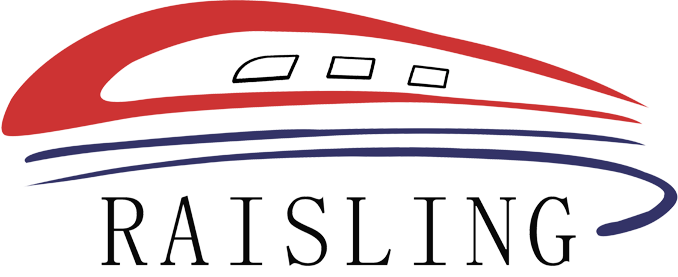Why Choose High-Quality Rail Clips for Your Rail Network?
Jun 25,2025
Why Choose High-Quality Rail Clips for Your Rail Network? In the world of rail transportation, the **integrity of the rail system** hinges on various components that ensure safety, performance, and durability. One such component, often overlooked but crucial, is the **rail clip**. High-quality rail clips are fundamental for securing rails to the sleepers, and they play an essential role in the ove

Why Choose High-Quality Rail Clips for Your Rail Network?
In the world of rail transportation, the **integrity of the rail system** hinges on various components that ensure safety, performance, and durability. One such component, often overlooked but crucial, is the **rail clip**. High-quality rail clips are fundamental for securing rails to the sleepers, and they play an essential role in the overall stability and functionality of rail networks. In this article, we will delve into the many reasons why investing in high-quality rail clips is essential for your rail network's success.
The Essential Role of Rail Clips in Rail Infrastructure
Rail clips are designed to hold the rails securely in place while allowing for necessary adjustments in response to temperature fluctuations and other environmental factors. Their primary purpose is to:
- Ensure **rail stability**: High-quality rail clips maintain the position of the rail, preventing shifting, which can lead to derailments and other safety hazards.
- Allow for **flexibility**: Good rail clips can accommodate the thermal expansion and contraction of rails.
- Facilitate **easy maintenance**: Quality clips make it easier for maintenance crews to access and adjust the rails as needed.
Key Benefits of Choosing High-Quality Rail Clips
When selecting rail clips, opting for high-quality options offers numerous benefits that enhance performance and longevity. Here are some key advantages:
1. Enhanced Safety and Reliability
High-quality rail clips are manufactured to rigorous standards, ensuring they can withstand the stresses and strains of rail operations. This durability translates into enhanced safety for both passengers and freight. A securely fastened rail reduces the risk of accidents associated with rail misalignment, making high-quality clips a critical safety component.
2. Improved Longevity and Cost-Effectiveness
While the upfront cost of high-quality rail clips might be higher than lower-quality alternatives, their durability often leads to lower long-term costs. Infrequent replacements and reduced maintenance requirements can result in significant savings over time. High-quality clips resist wear and tear, making them a wise investment for rail operators.
3. Compatibility with Various Rail Systems
High-quality rail clips are designed to work with various rail systems, including different rail types and sizes. This adaptability simplifies inventory management and allows for seamless integration into existing rail networks, reducing the need for custom solutions.
4. Minimal Maintenance Requirements
Quality rail clips require less frequent maintenance than their lower-quality counterparts. They are engineered to resist environmental factors such as corrosion and wear, which minimizes the need for regular inspections and replacements. This reliability allows rail operators to focus resources on other critical areas of their operations.
5. Environmental Resistance
Many high-quality rail clips are treated or coated to resist environmental degradation factors such as moisture, salt, and extreme temperatures. This added protection ensures that the clips maintain their integrity over time, even in harsh conditions.
How to Choose the Right High-Quality Rail Clips
Selecting the right rail clips involves considering various factors to meet your specific rail network needs. Here are some criteria to guide your decision:
1. Material Selection
High-quality rail clips are typically made from materials that provide strength and resistance to environmental factors. Common materials include:
- **Steel**: Known for its strength and durability, steel rail clips are often treated to resist corrosion.
- **Polymer**: Some rail clips are made from high-strength polymers that offer lightweight properties and excellent resistance to wear and conditions.
- **Composite Materials**: A combination of materials can be used to maximize strength and minimize weight.
2. Design and Engineering
The design of rail clips can significantly impact their performance. Look for clips with features such as:
- **Spring action**: This allows the clip to maintain tension on the rail, accommodating thermal expansion.
- **Anti-loosening mechanisms**: These features help prevent clips from loosening over time, which enhances safety.
3. Manufacturer Reputation
Choosing a reputable manufacturer is crucial. Look for companies with:
- **Industry certifications**: Certifications such as ISO or EN standards often indicate a manufacturer’s commitment to quality.
- **Proven track record**: Research customer reviews and case studies to gauge the performance of their rail clips in real-world applications.
4. Testing and Quality Assurance
Ensure that the rail clips undergo rigorous testing processes. Quality assurance measures, such as material testing and performance evaluations, can provide confidence in the reliability and safety of the clips.
Maintenance Tips for High-Quality Rail Clips
Even with high-quality rail clips, regular maintenance is essential for ensuring optimal performance. Consider these maintenance tips:
1. Regular Inspections
Routine inspections can identify potential issues before they become critical. Look for signs of wear, corrosion, or loosening of the clips.
2. Clean the Rail Area
Keeping the rail area clean helps prevent debris buildup that can affect the performance of rail clips. Regularly clearing vegetation and other obstructions is advisable.
3. Monitor Environmental Conditions
Be aware of environmental factors that may impact the rail clips. In areas with extreme weather, consider additional protective measures, such as coatings or regular replacements.
4. Document Maintenance Activities
Keeping a maintenance log can help track the performance and condition of rail clips over time. This documentation can also be beneficial for future planning and budgeting.
Frequently Asked Questions (FAQs)
1. What are rail clips made of?
Rail clips are typically made from materials such as steel, polymer, or composite materials. Each material has unique properties that can enhance performance and longevity.
2. How often should rail clips be replaced?
The replacement frequency of rail clips depends on various factors, including environmental conditions and the quality of the clips. Regular inspections can help determine when a replacement is necessary.
3. Can high-quality rail clips be used with different rail types?
Yes, many high-quality rail clips are designed to be compatible with various rail types and sizes, making them versatile for different rail systems.
4. What is the cost difference between high-quality and low-quality rail clips?
While high-quality rail clips may have a higher initial purchase price, their durability and lower maintenance needs often result in cost savings over time.
5. Do high-quality rail clips require special installation procedures?
Generally, high-quality rail clips do not require special installation procedures compared to standard clips, but it's essential to follow the manufacturer's guidelines for best results.
Conclusion
Investing in high-quality rail clips is not just a matter of choice; it is a crucial element in ensuring the safety, efficiency, and longevity of your rail network. From enhancing safety and reliability to reducing long-term costs, the benefits of choosing premium rail clips are clear. By considering factors such as material selection, design, and manufacturer reputation, you can make an informed decision that will serve your rail infrastructure well for years to come. Prioritizing quality in rail clips ensures that your rail system operates smoothly and effectively, contributing to the overall success of your transportation objectives.
Previous:
Recommended
Asia Pacific Rail 2025 Concludes in Bangkok, Showcasing Rail Industry's Future
Bangkok, May 29 - The Asia Pacific Rail 2025, a leading event in the railway and rail transit industry, successfully concluded on May 29 in Bangkok, Thailand.
There is one sheet production line and two high-precision engraving machines, with an annual production capacity of 6 million railway special height adjustment pads.
Contact Us


